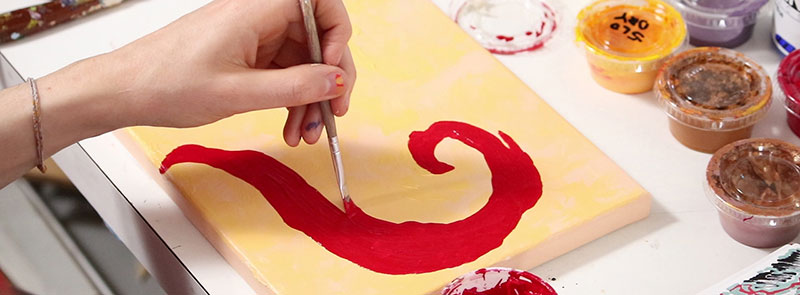Prompt
- Interpret the theme of “ghosts” by visually exploring repetition and transparency.
- Draw a minimum of 5 ghosts in your composition.

Examples
Dictionary Definition
- Even though most people understand what the word “ghost” means, looking up the dictionary definition can sometimes spark more ideas.

Inspiration
William Blake, Ghostbusters, Gustave Doré, Michael Mazur, Dadu Shin, John Doyle, Princess Mononoke, Yūrei in Japanese folklore
Brainstorming
- Create mood boards.
- Brainstorm with key words, image searches, mind maps, etc.

Thumbnail Sketches
- Thumbnails will be especially helpful to plan out your composition.
- Try to get past the most literal, cliché version of what people expect ghosts to look like.
- Put that cliché down on paper, then eliminate it!
- Draw at least 6 thumbnail sketches.
Reference Photos
- Consider using reference photos.
- Photos that may seem unrelated can be excellent resources for shape, textures, and environments.
- For example, these photos of water could be used for textures.
- Use our free reference photo collection.
tips
- Consider the ghosts as group, are they scattered and fragmented?
- Do the ghosts group merge to imply a larger form?
- The silhouette of your ghosts is important, think about that shape before developing facial features.
- Ghosts don’t have to have a face!

Narrative
- While this does not need to be an illustrative image, it can helpful to have a narrative that you are starting from.
- Taking a ghost story from mythology, folklore, literature can be a great place to start.
- A ghost based on one of your ancestors and their story can be very compelling.

drawing media & paper

- Think about drawing media and papers that have an inherent transparent quality to them.
- Shape and transparency translates into collage very well.
- Translucent surfaces like tracing paper, parchment, wax paper can be really fun to draw on, or used as cut out shapes.
- See our overview of drawing supplies to get ideas from our Drawing Curriculum.
Elements of Art: Shape
This video explains SHAPE, one of the Elements of Art. Shape can be a powerful visual tool for creating dynamic compositions. Examples of illustrations, paintings, sculptures, and more are shown, where shape plays an integral role.
Discussion led by Art Prof Clara Lieu and Teaching Artist Deepti Menon.
Elements of Art: Value
This video explains VALUE, one of the Elements of Art. Topics include using value as a means of creating dramatic lighting and contrast, how to create subtlety with value, and fostering an illusion of a broad range of greys.
Examples from both art history and contemporary art are shown to illustrate how value works. Discussion led by Art Prof Clara Lieu and Teaching Artists Alex Rowe and Cat Huang.
































